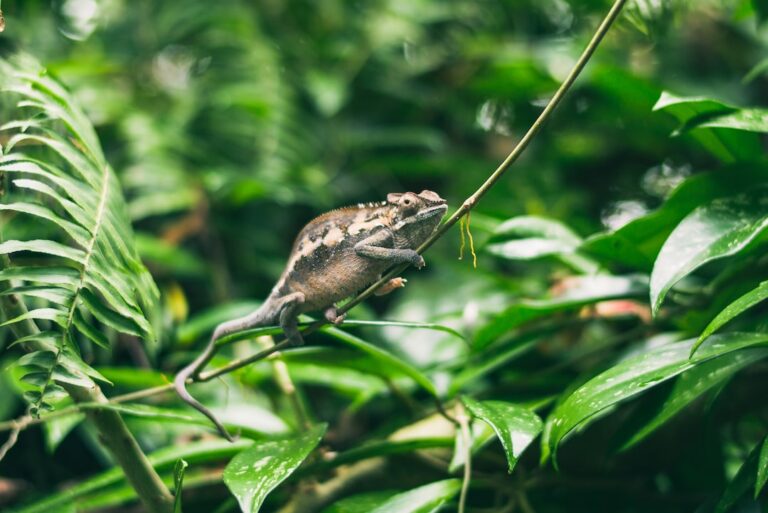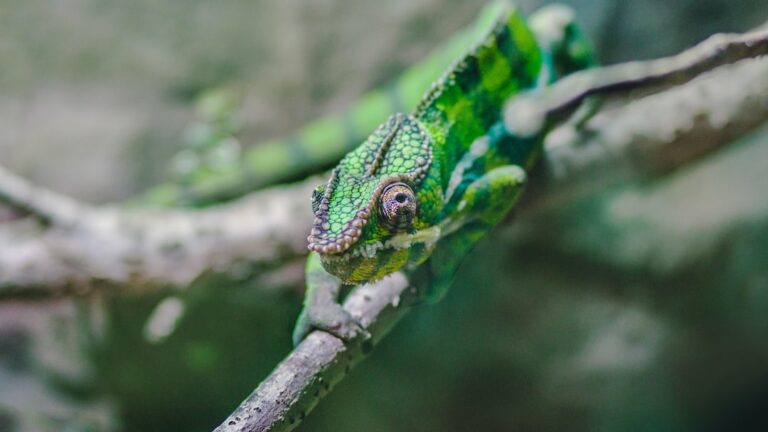Are Chameleons Quiet?
Chameleons are fascinating creatures that have captivated the imaginations of people for centuries. With their ability to change colors and blend into their surroundings, they are often seen as mysterious and elusive. However, there is much more to these reptiles than meets the eye. Chameleons are known for their unique characteristics, such as their independently moving eyes, long tongues, and prehensile tails. They are also known for their ability to remain motionless for long periods of time, making them excellent hunters.
Table of Contents
The Myth of Chameleons Being Completely Silent
One common misconception about chameleons is that they are completely silent creatures. Many people believe that chameleons do not make any sounds at all. This misconception may stem from the fact that chameleons are not known for their vocalizations like other animals such as birds or mammals. However, recent research has shown that chameleons do indeed make sounds, albeit in a different way than we might expect.
Do Chameleons Make Any Vocalizations?
Recent studies have revealed that chameleons do make vocalizations, although they are not as loud or complex as those of other animals. These vocalizations were discovered by researchers who used sensitive microphones to capture the sounds made by chameleons in their natural habitats. The researchers found that chameleons produce a variety of sounds, including hissing, grunting, and chirping.
The Different Types of Sounds Chameleons Can Produce
Chameleons have a range of vocalizations that they use for different purposes. One of the most common sounds made by chameleons is hissing. This sound is produced by expelling air from their lungs through a small opening in their throat called the glottis. Hissing is often used as a warning signal to deter predators or to communicate with other chameleons.
In addition to hissing, chameleons can also produce grunting sounds. These grunts are low-pitched and are often used during territorial disputes or mating rituals. Chameleons may also produce chirping sounds, which are high-pitched and can be heard over long distances. These chirps are believed to be a form of communication between chameleons, although their exact meaning is still not fully understood.
The Purpose of Chameleon Vocalizations
The vocalizations made by chameleons serve several important purposes. One of the main reasons chameleons make sounds is for communication with other chameleons. By hissing, grunting, or chirping, chameleons can convey information about their intentions, such as warning off potential rivals or attracting a mate.
Chameleon vocalizations also play a role in predator deterrence. When threatened by a predator, chameleons may hiss loudly to startle or intimidate the predator and discourage it from attacking. This is especially effective because the sudden noise can catch predators off guard and give the chameleon an opportunity to escape.
How Loud Can Chameleon Sounds Get?
While chameleon vocalizations may not be as loud as those of other animals, they can still be quite impressive considering the size of the reptile. The decibel levels of chameleon sounds vary depending on the species and the specific vocalization being produced. Hissing sounds can range from 60 to 80 decibels, which is roughly equivalent to the sound of a vacuum cleaner or a busy street. Grunting sounds can reach up to 90 decibels, which is similar to the sound of a lawnmower or a motorcycle. Chirping sounds can be even louder, reaching up to 100 decibels, which is comparable to the sound of a chainsaw or a rock concert.
Factors That Affect Chameleon Vocalizations
Several factors can influence the vocalizations made by chameleons. One of the main factors is the environment in which the chameleons live. Chameleons that live in dense forests or other areas with a lot of background noise may need to produce louder vocalizations in order to be heard by other chameleons. On the other hand, chameleons that live in quieter environments may not need to produce as loud of vocalizations.
Social factors can also impact chameleon vocalizations. For example, male chameleons may produce louder and more frequent vocalizations during mating season in order to attract females and establish their dominance over other males. Additionally, the presence of other chameleons can influence vocalizations, as chameleons may use vocalizations to communicate with each other and establish their territories.
The Importance of Understanding Chameleon Communication
Understanding chameleon vocalizations is important for both chameleon owners and researchers. For chameleon owners, knowing how and why chameleons make sounds can help them better care for their pets. For example, if a chameleon is hissing frequently, it may be a sign that it is stressed or uncomfortable in its environment. By understanding the meaning behind these vocalizations, owners can make adjustments to ensure their chameleons are happy and healthy.
For researchers, studying chameleon vocalizations can provide valuable insights into their behavior and social dynamics. By analyzing the different types of sounds made by chameleons and their contexts, researchers can gain a better understanding of how chameleons communicate with each other and how they interact with their environment. This knowledge can help inform conservation efforts and contribute to our overall understanding of these unique creatures.
Tips for Keeping Chameleons Quiet in Captivity
While chameleon vocalizations are a natural part of their behavior, there are some steps that chameleon owners can take to minimize vocalizations in captive chameleons. One of the most important factors is providing a suitable and stress-free environment for the chameleon. This includes providing appropriate temperature, humidity, and lighting conditions, as well as plenty of hiding spots and climbing opportunities. A comfortable and secure environment can help reduce stress and minimize the need for vocalizations.
Another tip is to avoid handling the chameleon too frequently or in a rough manner. Chameleons are sensitive creatures and may become stressed or agitated if they are handled too much or if they feel threatened. By respecting their boundaries and providing them with a calm and quiet environment, owners can help keep their chameleons calm and minimize vocalizations.
Appreciating the Unique Qualities of Chameleons
In conclusion, chameleons are truly fascinating creatures with unique characteristics. While they may not be known for their vocalizations like other animals, recent research has shown that chameleons do indeed make sounds. These vocalizations serve important purposes such as communication with other chameleons and predator deterrence. Understanding chameleon vocalizations is important for both chameleon owners and researchers, as it can help improve care practices and contribute to our overall knowledge of these remarkable reptiles. By appreciating the unique qualities of chameleons, we can gain a deeper understanding and appreciation for the natural world around us.
If you’re curious about the vocal abilities of reptiles, you might be interested in reading the article “Turtle Chirping: Do Turtles Make Noise?” on Reptile Friend. This informative piece explores whether turtles have the ability to produce sounds and why they might chirp. It’s a fascinating read for anyone looking to learn more about the communication methods of these intriguing creatures.






